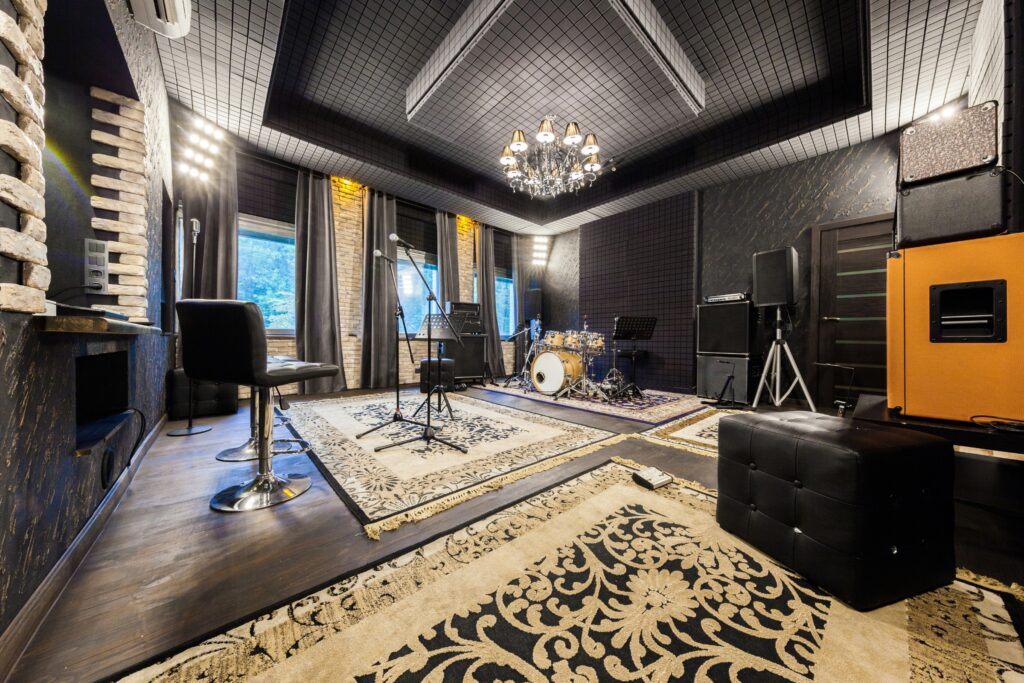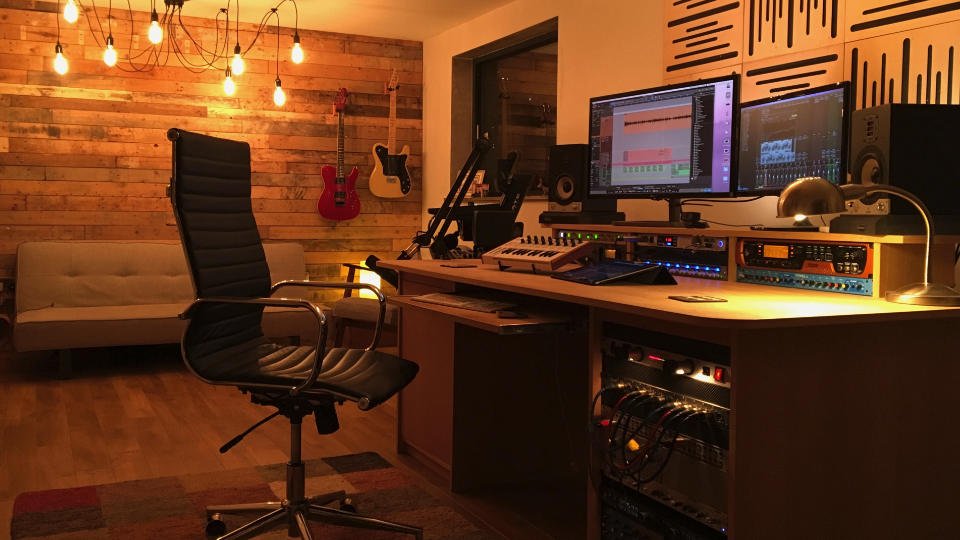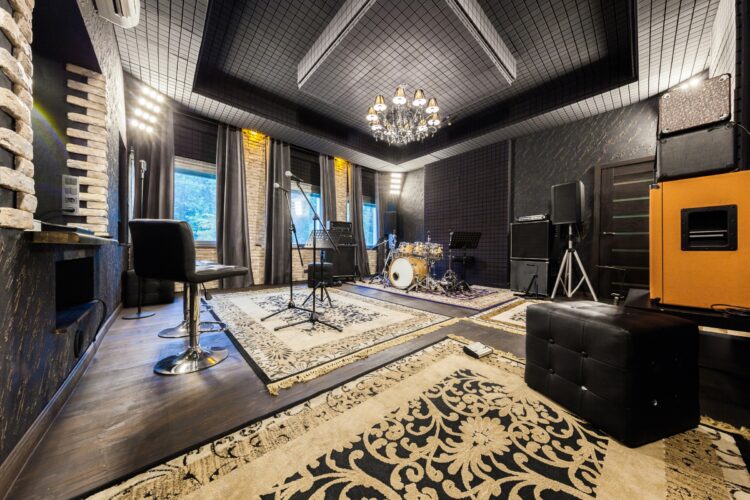
Creating a home studio that not only serves as a workspace but also reflects your personal lifestyle is becoming increasingly popular among artists, musicians, and creators. The modern-day home studio lifestyle is more than just a place to work; it’s a combination of creativity, comfort, and practicality. Whether you’re setting up a home recording studio life or transforming a space into a versatile creative home studio, having a thoughtfully designed environment is key to maximizing productivity and maintaining a balanced lifestyle.
This guide will help you explore the best practices for setting up, designing, and organizing your home studio setup for both creative work and daily living, using practical advice to balance work-life in a studio living space.
Introduction to Home Studio Living
The home studio lifestyle represents a fusion of creativity and personal living spaces. It’s about creating an environment that nurtures both your professional goals and your personal life, providing a seamless flow between work and relaxation. The appeal of a home studio setup lies in the ability to shape the space according to personal style and professional needs. Many individuals now prefer the flexibility of working from home, allowing them to integrate creativity into their everyday lives.
What Makes a Good Home Studio Setup?
A creative home studio should cater to both comfort and functionality. Whether you’re designing a small space or converting a larger area, it’s important to think about the type of work you’ll be doing—whether it’s music production, graphic design, or content creation. Key components to consider include:
- Acoustic Treatment: Essential for home recording studio life, effective soundproofing ensures you achieve optimal sound quality.
- Ergonomic Furniture: Comfort is crucial for long hours of creativity. Opt for ergonomic home studio furniture like adjustable desks and supportive chairs.
- Lighting: Good lighting enhances mood and productivity. Consider adjustable lighting for different times of day to maintain focus and comfort in your home studio environment.
Creating the right studio living space ultimately depends on your unique needs and the atmosphere you wish to cultivate.
How to Set Up Your Home Studio for Creative Work
Choosing the Right Home Studio Equipment
One of the first steps in establishing a home recording studio life is selecting the proper equipment. This will ensure your workspace is not only functional but also efficient for the type of creative work you plan to do. For musicians and sound engineers, this includes high-quality microphones, audio interfaces, headphones, and speakers. For other creatives, essential items might include computers, digital tablets, and cameras.
When looking for DIY home studio equipment, it’s important to balance cost and functionality. There are many affordable yet effective options that will provide the tools you need without breaking the bank. You don’t need to buy high-end gear if you’re just starting. Begin with the basics, such as:
- Audio Interface and Microphone for music production at home.
- Studio Monitors to improve sound clarity.
- Soundproofing Materials to manage noise within your home studio setup.
Designing Your Creative Home Studio
Designing a home studio setup requires both creativity and practicality. Start by evaluating the space you have available, whether it’s a small room or a dedicated area of your home. Here are some key considerations to keep in mind:
- Space Optimization: Whether you have a large room or a smaller space, home studio organization is essential. Consider modular furniture that can adapt to your workspace as needs change.
- Aesthetic Appeal: Aesthetic design should align with your personal style. Your home studio interior design should reflect the type of work you do—if you’re a musician, vibrant colors and cozy textures might inspire creativity, while minimalistic decor might help you focus if you’re a designer.
- Functional Layout: Make sure your desk, equipment, and storage areas are easily accessible. A well-organized home studio environment contributes significantly to a productive workflow.
Studio Setup for Music Production and More
For those focused on music production at home, having the right tools to record, mix, and produce is key. Incorporating professional studio equipment into your home studio setup will elevate your music production. Focus on:
- High-quality headphones and speakers for accurate sound.
- Acoustic treatments like foam panels and bass traps to control sound reflections.
- Effective lighting to set the mood for productive recording sessions.
How to Maintain a Productive Lifestyle in Your Home Studio
Balancing Work and Personal Life in Your Home Studio
One of the key challenges when living and working in the same space is maintaining a healthy work-life balance. Creating clear boundaries between creative space in the home and personal areas helps preserve focus and relaxation. Here’s how you can balance both aspects effectively:
- Designate Separate Zones: Consider having a clear division between your workspace and relaxation areas. Even if your studio is part of a living room, try to create a distinct area with physical markers (e.g., a rug or partition).
- Establish a Routine: Set specific work hours to maintain structure. By scheduling time for both work and breaks, you’ll keep your productivity up while still enjoying downtime.
- Stay Organized: Use storage solutions that help you keep everything in place. A well-organized home studio setup helps create mental clarity, making it easier to switch from work to personal time.
Maximizing Productivity in a Home-Based Workspace
To ensure your home-based workspace setup fosters productivity, consider the following strategies:
- Technology and Tools: Equip your home studio with home studio essentials for creators, such as high-speed internet, noise-canceling headphones, and other tools that optimize your workflow.
- Comfortable Work Environment: A comfortable ergonomic home studio furniture setup supports long hours of work. Consider a chair that encourages good posture and adjustable lighting to reduce eye strain.
- Time Management: Use techniques like the Pomodoro method or time-blocking to manage creative work and tasks efficiently in your home studio environment.
Ergonomics and Comfort in the Home Studio
Long hours in the studio can take a toll on your body, so ergonomic home studio furniture is essential. A supportive chair, keyboard positioning, and adjustable desks can reduce strain and promote better posture. Additionally, small adjustments like having a footrest or keeping your screen at eye level can make a huge difference in comfort.
What Are the Essential Features of a Functional Home Studio?
Acoustic Treatment and Studio Atmosphere
To create a truly functional home studio environment, it’s crucial to focus on studio acoustics for home environments. Effective soundproofing helps eliminate external noise and minimizes sound reflection, allowing for more precise work. Acoustics can dramatically affect your sound recording, mixing, and overall creative process. Use:
- Acoustic panels for wall treatments.
- Bass traps for corners where low-frequency buildup occurs.
- Diffusers to scatter sound and reduce reverb.
Lighting, Decorations, and Comfort
The lighting in your home studio environment plays a significant role in mood and productivity. Home studio lighting ideas include adjustable desk lamps, wall-mounted lights, and ambient lighting to create a space conducive to both focused work and relaxation.
Incorporate personal touches into your studio space through indoor creative studio decoration—artwork, plants, and other elements that inspire creativity and make the space feel comfortable and inviting.
How to Organize Your Home Studio for Maximum Efficiency
Storage Solutions for Small Home Studios
When working in a small space, home studio organization is critical. Utilize vertical storage, multi-purpose furniture, and efficient shelving to keep your gear and tools organized. Maximize every corner of your studio to store cables, instruments, and materials out of sight while keeping them easily accessible.
Creating a Clutter-Free, Functional Space
A clutter-free studio leads to a clutter-free mind. Use storage boxes, drawer organizers, and cable management solutions to keep your home studio setup clean and tidy. Whether you’re working on a small creative project or a larger-scale production, staying organized ensures efficiency and focus.
Why Is the Home Studio Lifestyle Becoming So Popular?

The shift toward a home studio lifestyle is primarily driven by the rise of remote work and the increasing demand for creative spaces at home. More people are transitioning to remote work from home, requiring environments that blend functionality with personal style. The ability to work and create in the same space offers a level of flexibility that was once unavailable. The home office and studio blend allows creators to work without the need for long commutes, making it an appealing choice for many.
Conclusion
The home studio lifestyle offers flexibility, creativity, and comfort. By thoughtfully designing your home studio setup with a focus on ergonomic home studio furniture, acoustics, and studio-inspired living spaces, you can create an environment that enhances both your personal and professional life. Embrace the potential of working from home by optimizing your space for both productivity and relaxation.
FAQs
How can I set up a home studio on a budget?
Start with the essentials: a quality audio interface and microphone for sound recording. Opt for affordable DIY home studio equipment, and focus on functional, versatile furniture to help with home studio organization.
What are the best ergonomic furniture choices for my home studio?
Choose chairs with lumbar support, adjustable desk height, and wrist pads for keyboard and mouse use. Ergonomic home studio furniture helps maintain comfort during long hours of creative work.
How can I balance my personal life with work in a home studio?
Designate clear zones for working and relaxing, and establish a daily routine to separate work time from downtime. This ensures a good balance between creative space in the home and personal life.
What are the must-have items for a productive home studio?
Key items include an audio interface, quality headphones, ergonomic home studio furniture, and home studio essentials for creators like soundproofing materials and efficient storage solutions.
Can I use a small space as a functional home studio?
Yes! By using home studio organization tips, like vertical storage and multi-functional furniture, you can transform a small area into a highly functional and productive creative workspace.
